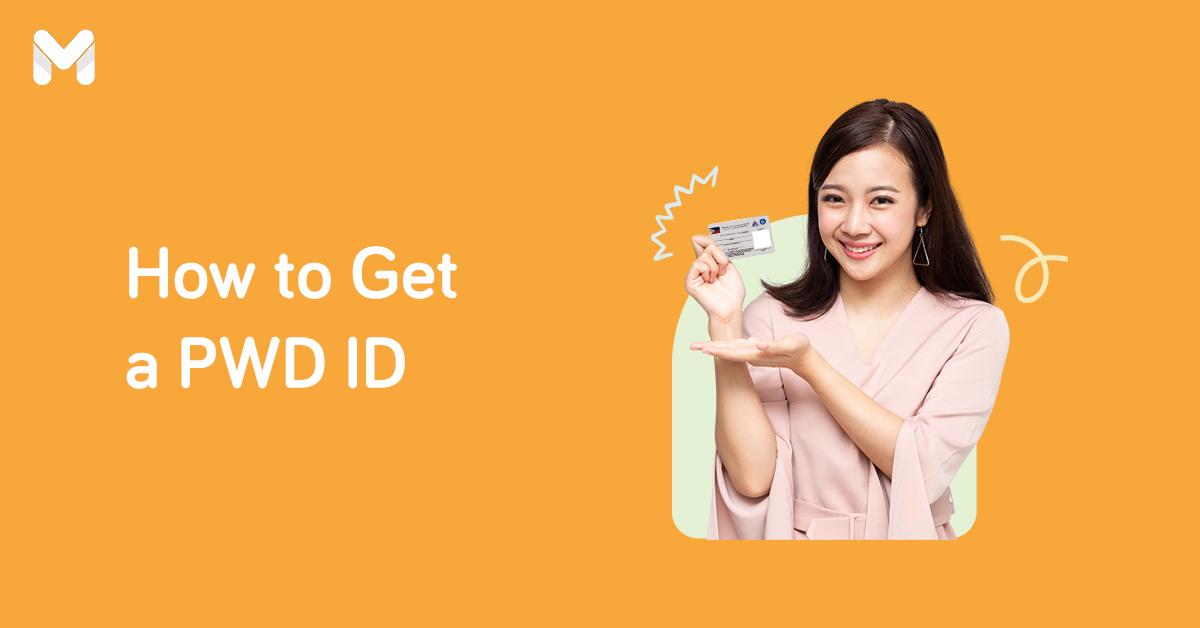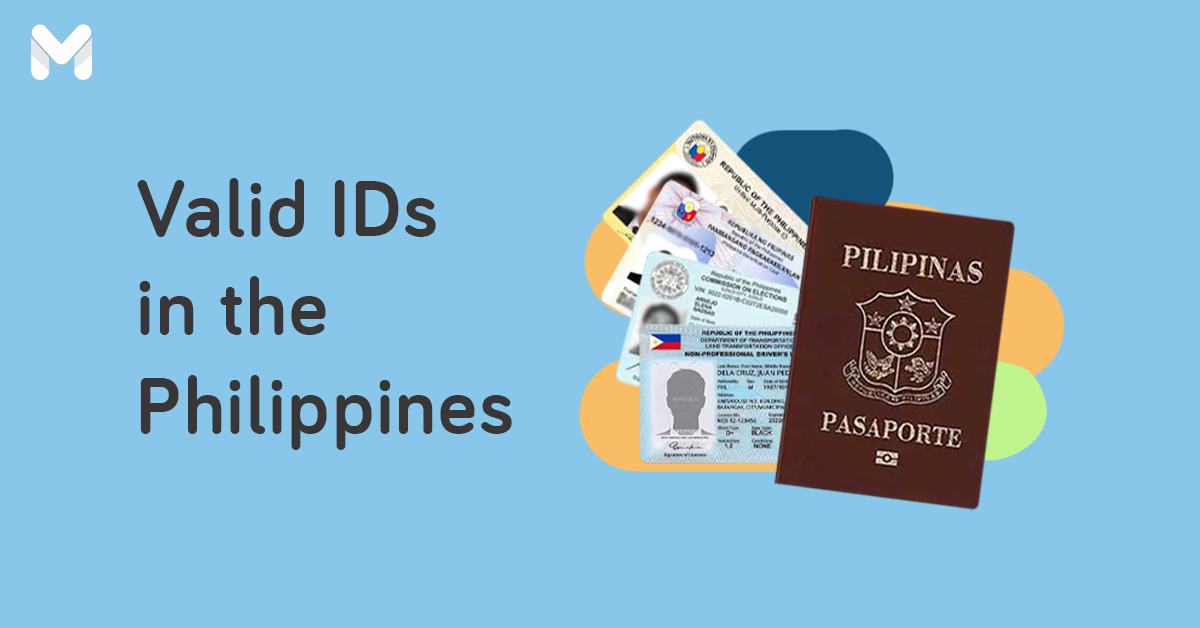If you're a new driver, you’re probably feeling an indescribable mix of excitement and anxiety to take your car for a spin for the first time. But before you can drive, you’ll need a driver's license.
Your license is proof that you're authorized to drive a car. Driving without a valid license is illegal in the Philippines. You will be fined ₱3,000 for that violation.
The driver's license application process in the Philippines can be quite confusing for first-timers. Check out this guide on how to get a driver's license so that you know what to expect and what to do when you apply for one.
What is a Driver's License?
A driver's license is an official, government-issued document that authorizes the cardholder to drive a motor vehicle in the Philippines. This identification card also functions as a valid ID for various transactions in the government and private sectors.
The Land Transportation Office (LTO), a frontline government agency under the Department of Transportation (DOTr), issues driver's licenses in the Philippines. The agency is responsible for driver licensing and motor vehicle registrations in the country.
A new driver’s license is valid for five years. On the other hand, student permits are only valid for one year.
Types of Driver's License in the Philippines

Photo: Land Transportation Office - Philippines (Facebook)
The LTO has three classifications of driver licensing: student permit, non-professional driver’s license, and professional driver’s license.
📌 Student Permit
A student permit is a prerequisite for both professional and non-professional driver's licenses. Also called student driver's permit, this LTO-issued document is a basic license authorizing a person to drive a vehicle accompanied by a licensed driver (whether with a professional or non-pro license).
Who Can Apply for a Student Permit?
- Filipinos at least 16 years old
- Foreigners at least 18 years years old who have stayed in the Philippines for at least one month and have proof of residence for up to six months
- People whose license has been expired for 10 years or more and have no traffic violations
- Must be physically and mentally fit to drive vehicles
- Individuals who completed the theoretical driving course
Student Permit Requirements in 2023
- Completed Application for Permits and Licenses (APL) form
- Any of the following (original copy for presentation and one photocopy for submission):
- Birth certificate issued by the Philippine Statistics Authority (PSA) or the National Statistics Office (NSO)
- Passport
- Philippine Identification Card
- PSA Marriage Certificate
- Local Civil Registry (for places where there is no PSA)
- Any issued ID with your photo and signature (original copy for presentation and one photocopy for submission)
- For applicants below 18 years old:
- Parent or guardian’s consent
- Valid government-issued ID of the parent/guardian with photo and signature (original copy for presentation and one photocopy for submission)
- For foreigners (original copy for presentation and one photocopy for submission):
- Passport with entry date of at least one month and visa duration of six months from date of application
- If born in the Philippines, birth certificate authenticated by the PSA
- Medical certificate electronically transmitted by an LTO-accredited clinic (original copy for presentation and one photocopy for presentation)
- Certificate of Completion of the 15-hour theoretical driving course electronically transmitted by an LTO Driver’s Education Center (LTO DEC), LTO-accredited driving school, or LTO-accredited TESDA training center (original copy for presentation and one photocopy for submission)
- For employed applicants: Taxpayer’s Identification Number (TIN)
📌 Non-Professional Driver's License
A non-professional or non-pro driver’s license allows you to drive private vehicles only. You may apply for a non-pro driver's license one month to one year after the issue date of your student permit.
In April 2022, the DOTr unveiled a new design for the driver’s license with a pearl white color, which looks different from the old bluish card. The redesigned driver's license still keeps the license’s security features, ensuring its legitimacy.

Who Can Apply for a Non-Pro Driver's License?
- Filipinos at least 17 years old
- Foreigners are at least 18 years old
- Holders of a valid student permit for at least one month from issuance
- Must be physically and mentally fit to operate a vehicle
- Must have attended and passed the Practical Driving Course (PDC) from an LTO-accredited driving school, LTO DEC, or LTO-accredited TESDA training center
- Must have passed the LTO examinations
- Must not have unsettled traffic violations
Non-Pro Driver's License Requirements in 2023
- Completed Application for Permits and Licenses (APL) form
- For 17-year-old applicants:
- Parent or guardian’s consent
- Valid government-issued ID of the parent/guardian with photo and signature (original copy for presentation and one photocopy for submission)
- Medical certificate electronically transmitted by an LTO-accredited clinic (original copy for presentation and one photocopy for presentation)
- Practical Driving Course (PDC) certificate (original copy for presentation and one photocopy for presentation)
- Valid Student Permit
- For employed applicants: Taxpayer’s Identification Number (TIN)
📌 Professional Driver's License
As the name implies, a professional driver’s license allows you to drive a vehicle for a living. Apply for a professional license if you plan to drive any public utility vehicle (PUV) such as a taxi, transport network vehicle service (TNVS), jeepney, tricycle, bus, etc.
Who Can Apply for a Professional Driver's License?
- Filipinos at least 17 years old
- Foreigners at least 18 years old
- Must be a non-pro license holder for at least six months
- Must have no unsettled traffic violations
- Must be physically and mentally fit to operate a vehicle
- Must have completed a minimum of eight-hour practical driving lessons from any LTO or TESDA-accredited driving school
Professional Driver's License Requirements in 2023
- Completed Application for Permits and Licenses (APL) form
- Medical certificate electronically transmitted by an LTO-accredited clinic (original copy for presentation and one photocopy for presentation)
- Valid non-professional driver’s license
How to Get a Driver's License in the Philippines 2023: Step-by-Step Guide

Photo: Land Transportation Office - Philippines (Facebook)
To get your driver’s license, you'll indeed have to take a long and winding road. But if you know where to start, you’ll find the process easier.
These are the steps on how to get a driver’s license in the Philippines this 2023.
Step 1: Take a Theoretical Driving Course
If you're looking to get your driver's license in the Philippines, you'll soon find out that the LTO requires all first-time applicants to take a mandatory theoretical driving course.
This can be a little daunting for those who are not familiar with how to drive, but don't worry. If you take the course seriously, you can pass the test.
👉 What is a Theoretical Driving Course and Why is It Mandatory?
The theoretical driving course (TDC) is a program that you need to take before you apply for a student permit. LTO implements stringent policies to make sure that before applicants get a driver’s license, they’re fully knowledgeable about road safety and existing laws.
According to LTO’s Memorandum Circular 2019-2176,[1] Filipinos who want to apply for a student permit or a driver’s license must go through a 15-hour theoretical driving course. The program is supervised by certified instructors from LTO-accredited driving schools.
Student applicants will learn the fundamentals of driving, including traffic rules, violations, and other LTO special road laws. They should complete the program within two years from the start date of the course.
TDC students undergo a written examination consisting of 100 items. The passing score is 80.
👉 What Happens After You’ve Completed the Theoretical Driving Course?
Once you’ve completed the TDC and passed the written exam, you’ll receive a Certificate of Completion, which you’ll submit together with other requirements to process your student permit application.
The certificate is proof that you have taken the course instruction. It will have your electronically captured headshot, personal information (such as your full name, birthday, gender), and the issuance date of the certificate.
Step 2: Get a Student Permit
To become eligible for a non-pro or professional license, you should apply for a student permit first from the LTO.
This driving permit is issued to qualified Filipinos and foreigners who wish to learn how to drive. When testing your driving skills on the road on your first few tries, you’ll need to present this permit to authorities who might issue you a ticket.
A student permit will cost you around ₱300 and around an hour of processing at the LTO office. During the one-year validity of your student permit, take the time to practice and improve your driving skills.
Step 3: Enroll in a Practical Driving Course
After securing a student permit, the next step is to take at least eight hours of practical driving lessons from any LTO or TESDA-accredited driving school in the Philippines.
After completing your driving lessons and passing a practical driving exam or assessment, you’ll receive a Practical Driving Course (PDC) certificate, which is a requirement for your non-pro or professional driver's license application.
Step 4: Undergo a Medical Examination
To get a license, you need proof that you're physically and mentally fit to drive. Go through a medical exam (which will cost around ₱500) at any LTO-accredited clinic. Such clinics are located within or near the LTO office premises, so you can have your medical exam on the day of your driver's license application.
Your medical certificate will be submitted online to the LTO. Nevertheless, you'll also be given a hard copy of your med cert, which you'll submit to the LTO for validation.
Step 5: Apply for a Driver's License

Photo: Land Transportation Office - Philippines (Facebook)
Go to the nearest LTO branch for the process of getting your driver's license. Make sure to bring all the required documents to avoid any hassle.
👉 How to Apply for a Driver's License at the LTO Branch
- Submit the requirements. Approach the designated window and submit the driver's license requirements for evaluation. Log in to your account on the LTO Online Portal for validating your details. You'll then be given an Application for Driver’s License (ADL) form[2] to fill out and submit.
- Pay the necessary fees. Once your name is called, head to the cashier to pay the application fee.
- Take the LTO written exam. Proceed to the queue for the LTO written exam and enter the examination room once your name is called. Depending on your LTO office, the written exam may be a computerized test with 60 items. To pass the exam, you need to get at least 48 correct answers. If you fail the exam, the staff will tell you to come back the next working day (or any day at your convenience) to retake the exam and go through the entire driver's license application process again (except for the medical exam, as your medical certificate is valid for two months from issue date).
- Take the practical driving exam. If you pass the written exam, you'll then be asked to go outside the LTO office to take the practical driving test. You can either use your own vehicle (if you come with a licensed driver) or rent a vehicle on the LTO premises. If you fail the driving exam, you'll have to come back to the LTO office the day after (or any day at your convenience) to retake the exam and go through the entire driver's license application process again (except for the medical exam).
- Pay for the driver's license fees. If you pass, proceed to the cashier and pay for the driver's license card. How much does it cost to get a driver's license, you ask? The LTO charges ₱585 for the license fee and ₱100 for the application fee for driver's license applications as of 2023. Note that these driver's license application fees don't include the costs of the medical exam (around ₱500) and vehicle rental for the actual driving exam (around ₱200), which are charged by third-party providers. All in all, the driver's license application will cost you roughly ₱1,500. Bring cash, as LTO cashiers don't accept payment methods like GCash and credit cards as of writing.
- Have your biometrics taken. Go to another window where your fingerprints will be scanned and your photo taken for your license.
- Receive your driver's license. After making the payment, wait for your driver's license card to be printed and issued to you.
👉 How to Apply for a Driver’s License Online via the Land Transportation Management System (LTMS)
Alternatively, you can also apply for a driver's license online through the LTMS (aka LTO portal). Here's how to set an appointment online:
- Visit the LTMS website at https://portal.lto.gov.ph. If you haven’t registered yet, click the Register Now button to create an account. Otherwise, simply access your account by clicking the Log In button.
- On your dashboard, click the Licensing icon.
- Read and accept the Terms of Use.
- Select your license type (student permit or driver’s license).
- Click the Add Medical Certificate button then input your medical certificate number.
- Choose your driver’s license application type (new or renewal).
- Fill out the online application form.
- Upload the required documents indicated in the Document Description dropdown.
- Select your preferred LTO office, appointment date, and time. Then click the Proceed to Payment button.
- Choose your payment method. Then click the Proceed to Summary button.
- Read the disclaimers and click the Accept button.
- Your order summary and billing information will then appear. Read and agree to the Terms and Conditions.
- Click on your chosen payment method. Click the Continue button. You will be then directed to a third-party site to complete the payment.
Tips for a Hassle-Free Driver’s License Application
-Mar-10-2023-04-27-53-7937-AM.png?width=600&height=400&name=Pics%20for%20blog%20-%20600x400%20(1)-Mar-10-2023-04-27-53-7937-AM.png)
If you want to make the entire process of getting a driver’s license easier, check out the following few warnings and reminders:
- Head to your preferred LTO branch as early as possible. Many applicants go to the LTO facility as early as 6 a.m. If you want to know the operating hours of your chosen LTO branch, get in touch with them ahead of time.
- If your schedule doesn’t permit you to come early, try visiting the office at least two hours before closing time. Normally, there are only a few applicants left during this time. But keep in mind that this will depend on your chosen LTO branch.
- Book your appointment with the LTMS for a much quicker process of getting a driver’s license.
- Observe proper dress code. Avoid wearing sleeveless shirts, shorts, and slippers.
- Never engage with a fixer. It’s illegal, and you’ll end up spending more money. If someone introduces themselves as an LTO employee and offers to fast-track your application for a fee, report them to the proper authorities immediately.
How to Get a Driver's License in the Philippines: FAQs
Got questions on how to get a driver's license in the Philippines? Take a look at the following:
1. I’ve heard about the 10-year validity of the driver’s license. How can I qualify for one?
The 10-year driver’s license validity is a privilege or incentive extended to drivers with clean records. The LTO has been implementing the 10-year license validity since October 2021.[3]
Under Republic Act 10930,[4] professional license holders who have never violated any traffic law, rule, or regulation within the five-year period are entitled to a 10-year driver's license validity upon renewal. However, motorists with traffic violations will get driver's licenses with only five-year validity upon renewal.
2. When will my license expire?
You'll see your license expiration date on your driver's license card's front side.
How your validity period is determined depends on whether your license is issued before or after your birthday.
If you get your license before your birthday, the current year is included in the validity period. For example, if you get your license on July 10, 2022 and your birthday is on July 15, the year 2022 is included in the validity period (counted as 2022-2023-2024-2025-2026-2027-2028-2029-2030-2031). Your license will then expire in 2031.
But if your license is issued after your birthday, the current year is not included in counting the validity period. For example, if you get your license on July 10, 2022 and your birthday is on July 5, the counting of your validity period starts the following year (counted as 2023-2024-2025-2026-2027-2028-2029-2030-2031-2032). In this case, your license will expire in 2032.
3. Where can I enroll for a theoretical driving course? How much does it cost?

LTO-accredited driving schools nationwide, such as A-1 Driving and Smart Driving School, offer online and face-to-face/classroom-type theoretical driving lessons for more or less ₱2,000.
Looking to save money? Fortunately, the TDC is now available at selected LTO-accredited driving centers in your region for free. As of this writing, you must first contact the center and schedule your class. Check the LTO website for the complete list of driver’s education centers in the Philippines.[5]
4. What is the coverage of the Theoretical Driving Course and Hands-On Driving Exam?
Here’s what’s included in the 15-hour theoretical driving course:
- Background and evolution of LTO and its role in development
- Basics of LTO organization and functions
- Processes of vehicle registration and driver’s license application
- Traffic rules and regulations including traffic signs, signals, pavement markings
- Special laws and administrative issuances established by the LTO
- Hazard scanning recognitions and avoidance of road accidents
- Functions and use of vehicle accessories
- Parking techniques such as parallel, reverse, angle, and three-point turn
- Vehicle safety and basic troubleshooting
- Defensive driving, road safety and discipline practices
After getting a copy of the Filipino Driver’s Manual, students must complete the course instruction for not less than 15 hours.
For non-pro driver’s license applicants, the hands-on driving exam covers safe driving techniques in different road conditions, densities of traffic, and weather conditions. Drivers should complete this for at least eight hours at any LTO or TESDA-accredited driving school.
5. How do I pass the hands-on driving exam?
The practical driving test can be a nerve-wracking experience, but there are some things you can do to make sure you enjoy it and make the most of it. Remember that the test is just an opportunity to show off your skills as a driver. Here are some tips to keep you going:
✅ Know your route
This may seem like an obvious one, but make sure you know the route of your practical driving test before the day of the test. This way, you can focus on your driving and not worry about getting lost. If possible, drive the route a few times before your actual test so that you can familiarize yourself with it.
✅ Be confident
Believe in yourself and don't let your insecurities and doubts get the best of you. Remember that you’ve already passed the written portion of the driving test, so you’re halfway there! Take a deep breath and relax—you can do this!
✅ Stay calm
Self-doubt and anxiety can be your worst enemies on the day of your practical driving test. If you start to feel anxious, take a few deep breaths and remind yourself that you know how to drive. The test is just a formality and you’ll do great!
✅ Focus on the task at hand
Stay focused while driving. Don't let your mind wander, and don't get distracted by anything else going on around you. Keep your eyes on the road. Most importantly, keep your hands away from your smartphone.
✅ Have fun!
Driving can be fun, so make sure you enjoy it! Don't take the test too seriously and relax—you'll be fine. Before you know it, you’ll receive your certificate with your name on it.
Final Thoughts
The process of getting a driver’s license can be quite bureaucratic. The number of requirements and steps to get a driver’s license can be overwhelming for first-time drivers.
Thankfully, things have improved over the years. This is evidenced by the implementation of LTMS services, which allows motorists to apply for a driver’s license online.
Now that you know how to get a driver’s license, make the right preparations to ace the tests. Once you get past the grueling procedure, keep in mind that your responsibility doesn’t end with getting a license. You have been entrusted with a responsibility to make the road a safer place for your fellow drivers and pedestrians, so do your best!
Sources:
- [1] LTO Memorandum Circular 2019-2176
- [2] Downloadable Application Form for Student Driver's Permit / Driver's License / Conductor's License (LTO website)
- [3] DOTr - LTO Starts Issuing Driver's Licenses Valid For 10 Years (LTO press release, 2021)
- [4] Republic Act 10930 (Official Gazette)
- [5] List of Drivers Education Centers (LTO website)










